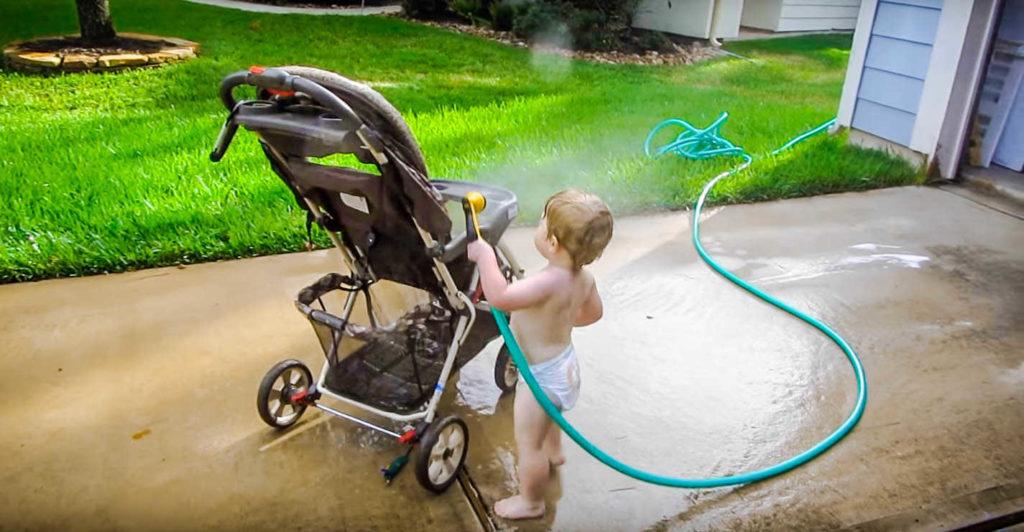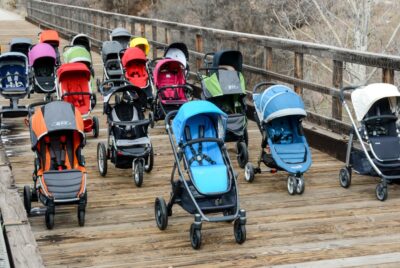Baby Stroller Maintenance Tips: Proper Care and Maintenance for Baby Strollers

As a passionate stroller enthusiast, I understand the importance of proper care and maintenance for your beloved stroller. Taking care of your stroller not only ensures its longevity but also guarantees the safety and comfort of your child. In this article, I will share some essential tips on baby stroller maintenance that will help keep your stroller in top-notch condition for years to come.
Cleaning the Stroller for Baby Stroller Maintenance
Keeping your stroller clean is vital to prevent the buildup of dirt, stains, and bacteria. Here’s how you can effectively clean your stroller:
- Removing Dirt and Debris: Before cleaning, remove any loose dirt or debris by using a brush or shaking the stroller gently. Pay attention to hard-to-reach areas, such as crevices and wheel joints.
- Washing the Fabric: Check the manufacturer’s instructions for specific cleaning recommendations. In general, most stroller fabrics can be spot-cleaned with a mild detergent and a damp cloth. For more stubborn stains, use a fabric stain remover. Avoid submerging the fabric in water unless stated otherwise by the manufacturer.
- Cleaning the Frame and Wheels: Wipe down the stroller frame and wheels with a damp cloth. For tougher grime, use a mild detergent. Ensure that all moving parts, such as the folding mechanism and wheel locks, are free from dirt and debris.
Lubricating Moving Parts as Baby Stroller Maintenance
Regular lubrication of the stroller’s moving parts is essential for smooth operation and durability. Follow these steps to lubricate your stroller effectively:
- Importance of Lubrication: Lubrication prevents friction and wear on the stroller’s moving parts. It also helps maintain maneuverability and prevents squeaking.
- Areas to Lubricate: Apply a small amount of lubricant to the stroller’s wheel axles, folding mechanisms, and brake systems. Be careful not to over-lubricate, as excessive lubricant can attract dirt and dust.
- Choosing the Right Lubricant: Opt for a silicone-based lubricant or a dry PTFE (polytetrafluoroethylene) spray. These lubricants are long-lasting and won’t stain the fabric or attract dirt.
Checking the Brakes for your Baby Stroller Maintenance
Properly functioning brakes are crucial for your child’s safety. Follow these steps to ensure your stroller’s brakes are in optimal condition:
- Ensuring Brake Functionality: Test the brakes regularly by engaging and disengaging them. They should engage smoothly and lock the wheels securely in place.
- Adjusting Brake Tension: If the brakes feel loose or too tight, consult the stroller’s user manual for instructions on adjusting the brake tension. Improper brake tension can affect the stroller’s stability and control.
Inspecting the Wheels is part of Baby Stroller Maintenance
The wheels of your stroller bear the brunt of daily use. To keep them in excellent condition, follow these guidelines:
- Checking for Wear and Tear: Regularly inspect the wheels for signs of wear, such as flat spots or cracks. Replace any damaged wheels promptly to ensure safe and comfortable rides.
- Replacing Damaged Wheels: Refer to the stroller’s user manual or contact the manufacturer for guidance on replacing wheels. They will provide you with the appropriate replacement wheels to maintain optimal performance.
Maintaining the Handlebars: Baby Stroller Maintenance
The handlebars of your stroller play a crucial role in providing a comfortable grip and control. Here’s how you can maintain them:
- Tightening Loose Handlebars: Periodically check the handlebars for any looseness or wobbling. Tighten any loose screws or bolts using the appropriate tools provided by the manufacturer.
- Replacing Worn-Out Grips: If the handlebar grips are worn out or torn, replace them with new ones. Grips that are in good condition ensure a secure and comfortable grip while pushing the stroller.
Storing the Stroller: Baby Stroller Maintenance
Properly storing your stroller when not in use is essential for its longevity. Consider the following tips:
- Folding and Storing Properly: Follow the manufacturer’s instructions to fold your stroller correctly. Secure any straps or latches to prevent accidental unfolding during storage. Store the stroller in a clean and dry area.
- Protecting from Extreme Weather Conditions: If you live in an area with extreme weather conditions, such as high humidity or prolonged sun exposure, consider using stroller covers or storing the stroller indoors to prevent damage.
Safety Considerations
Ensuring the safety of your child is paramount. Keep these safety considerations in mind while maintaining your stroller:
- Regularly Inspecting for Loose Screws and Bolts: Check the stroller’s frame, handlebars, and other components for loose screws and bolts. Tighten them as necessary to maintain stability.
- Checking for Stability and Balance: Periodically evaluate the stroller’s stability and balance. Ensure it doesn’t tip over easily and that all four wheels touch the ground evenly.
Traveling with the Stroller
If you plan to travel with your stroller, whether by airplane or car, these tips will come in handy:
- Tips for Airplane Travel: Consult your airline’s policies regarding stroller transportation. Most airlines allow strollers as carry-on or checked baggage. Use a protective bag or cover to prevent damage during handling.
- Properly Securing the Stroller in a Car: When using a stroller with a car seat attachment, make sure to follow the car seat manufacturer’s instructions for proper installation. Use seat belts or LATCH systems to secure the car seat and stroller in the vehicle.
Extending the Lifespan of the Stroller
To maximize the lifespan of your stroller, consider the following tips:
- Regular Maintenance Schedule: Create a maintenance routine that includes regular cleaning, lubrication, and inspection. This will help identify and address any issues before they worsen.
- Proper Usage and Care: Use your stroller according to the manufacturer’s guidelines. Avoid overloading it with excessive weight or subjecting it to rough terrain beyond its capabilities.
Conclusion of Baby Stroller Maintenance
By following these stroller maintenance tips, you can ensure the longevity, safety, and performance of your stroller. Remember to clean it regularly, lubricate the moving parts, check the brakes and wheels, maintain the handlebars, store it properly, and prioritize safety considerations. With proper care, your stroller will continue to provide a comfortable and enjoyable experience for both you and your child for years to come.
FAQs (Frequently Asked Questions) about Baby Stroller Maintenance
- How often should I clean my stroller?
- It is recommended to clean your stroller regularly, especially after outdoor use or spills. Aim for a thorough cleaning at least once every few months.
- Can I use regular oil for lubricating my stroller?
- No, it’s best to use a silicone-based lubricant or a dry PTFE spray specifically designed for strollers. Regular oil can attract dirt and dust, causing more harm than good.
- What should I do if my stroller’s wheels are wobbly?
- Check if the wheels are properly attached and tightened. If the wobbling persists, contact the manufacturer for further assistance or consider getting the wheels replaced.
- Can I wash my stroller’s fabric in a washing machine?
- It depends on the manufacturer’s instructions. Some stroller fabrics are machine washable, while others require spot-cleaning or handwashing. Refer to the user manual or contact the manufacturer for specific guidelines.
- How long can I expect a stroller to last with proper maintenance?
- With proper maintenance, a stroller can last for several years, accommodating multiple children. However, the lifespan can vary depending on the quality of the stroller and frequency of use.

